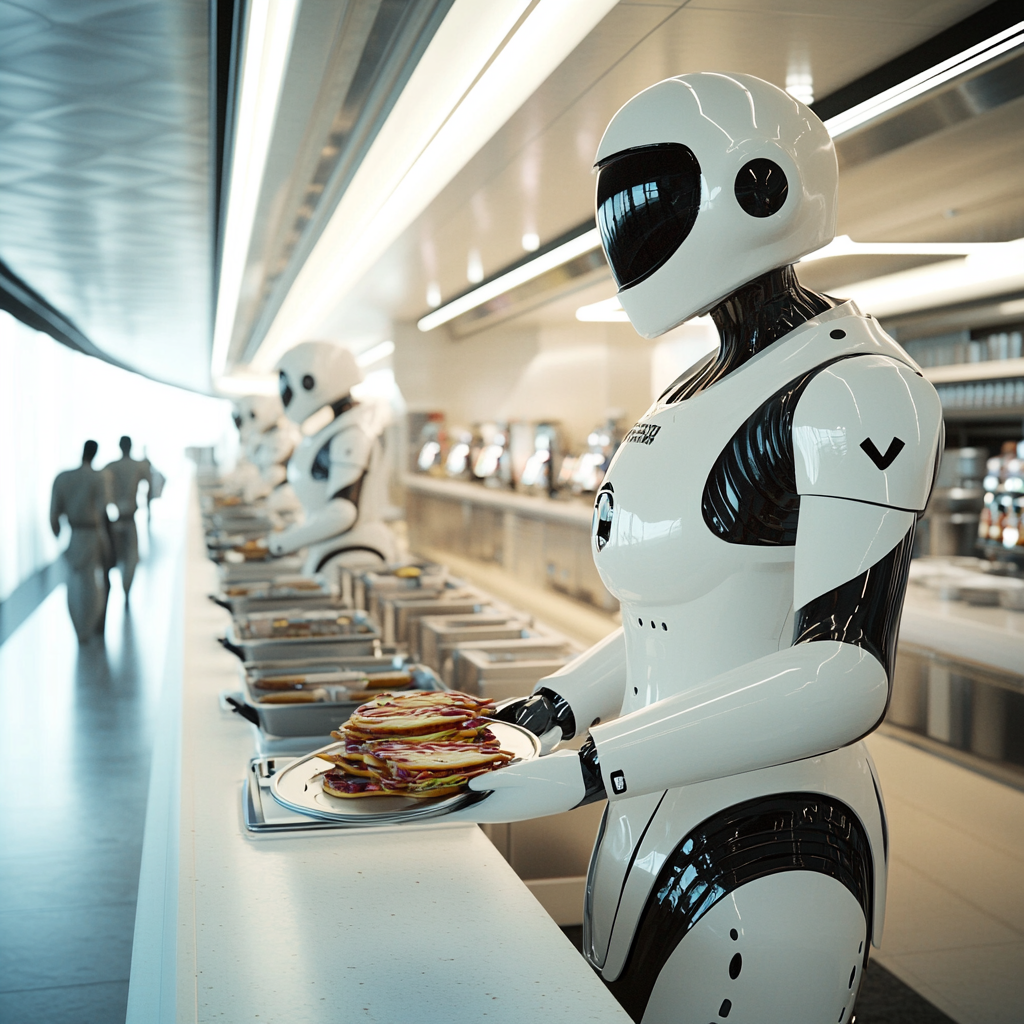
“Automated Cuisine: The Rise of Robot-Crafted Fast Food”
The Rise of Robotic Chefs: Is This the Future of Fast Food?
In the innovative hubs of Miso Robotics in Pasadena, California, something monumental is bubbling up—no, it’s not just a pot of soup; it’s a culinary revolution crafted by metal and circuitry. Robots are strutting their stuff in the fast-food scene, and they’re not just lurking in the corners; they’re commandeering the kitchens, twirling spatulas and flipping burgers with an enthusiasm unmatched by any tired human employee. But here’s the kicker: is this the future of fast food, or are we deluding ourselves into thinking we can replace the warmth of human touch with cold, robotic precision?
Meet Flippy, the Future of Frying
Enter Flippy. This isn’t just any robotic arm; it’s a master of multitasking, a precision powerhouse designed to drop fryer baskets into bubbling oil faster than you can say, "I’ll take fries with that!" Flippy represents a paradigm shift in fast food. According to the folks at Miso Robotics, Flippy can handle over 100 fry baskets an hour, significantly outpacing humble human workers, who, let’s be honest, can only manage about 70 baskets in that same time span. So, if efficiency were a race, Flippy is already crossing the finish line while humans are still tying their shoelaces.
The Upsides of Automation – Let’s Get Real
Robotic helpers like Flippy aren't just a gimmick; they’re redefining what it means to work in a restaurant. Let’s cut to the chase—automation offers a buffet of perks:
-
Efficiency: Robots don’t need coffee breaks, bathroom breaks, or the occasional day off. They grind tirelessly while humans sip on their lattes and scroll through TikTok. This tireless dedication means more orders can be prepared and served in a shorter amount of time, making for happier customers and potentially fatter profits.
-
Safety: Flippy doesn’t sweat the small stuff or the big stuff for that matter. Working with hot oils and heavy equipment is a recipe for disaster. Flippy allows humans to step back from those treacherous duties, making the workplace a whole lot safer. Forget about someone slipping on spilled fries; now that scenario feels like a faded memory.
-
Cost Savings: With wages rising and labor shortages often making headlines, investing in robots can seem like a golden ticket. Sure, the initial setup cost is monumental, but in the long run, these machines could save a veritable fortune in operational costs and reduce high employee turnover rates that will have HR departments pulling their hair out.
Test-Driving the Technology
Fast food heavyweights are hopping onto the robotic bandwagon faster than you can say "super-sized." White Castle is rolling out Flippy to nearly one-third of its 350 locations. Sweetgreen and Chipotle aren't sitting on the sidelines either; they’re experimenting with similar tech. Sweetgreen's "Infinite Kitchen" has been a fruitful venture, boosting order accuracy and sales by 10% while also reducing dreaded employee churn—those management headaches that nobody wants.
Early Days of Kitchen Automation – Expect Some Bumps
However, before we get carried away on a conveyor belt of optimism, it’s crucial to highlight that we’re still in the early days of kitchen automation. Industry analysts, like John Gordon, caution, “We are at the very, very early stage. The return on investment has not been proven.” Zume, a pizza-making startup that soared high and then nosedived, serves as a sobering reminder that innovation often walks hand-in-hand with uncertainty.
The Human Touch – Messy but Necessary
Let’s pause for a moment and appreciate this: as sleek and shiny as robots are, there's something undeniably important about the human element in cooking. Rich Hull, the Chief Executive of Miso Robotics, nails it when he articulates, “You're never going to get rid of humans in restaurants, nor would you want to.” The truth is, no matter how efficient robots become, they'll never be able to create the comforting vibe that skilled chefs bring to the kitchen or the delightful banter that makes dining out fun. The trick is achieving the right balance between robotic efficiency and the spark that only humans can provide.
Peering into the Future
Looking ahead, Miso Robotics is feeling optimistic about scaling up its production. They’re aiming for profitability by 2026, and with AI enhancements gradually slipping into Flippy’s programming, we could see a significant reduction in food waste and improved durability—all shaping a promising future for the robotic kitchen brigade.
The Takeaway
So as these robotic chefs slide their way into the fast-food industry, one thing becomes crystal clear—automation is not a fleeting trend; it's digging its roots. From frying to tossing salads and mixing guacamole, these technological wonders look set to flip our culinary expectations on their head. But as we shake hands with this metallic brigade, we must remain mindful of the irreplaceable warmth of human chefs, the ones who infuse passion and personality into every dish served.
Want to stay up to date with the latest news on innovative technologies like these? Subscribe to our Telegram channel: @channel_neirotoken.

